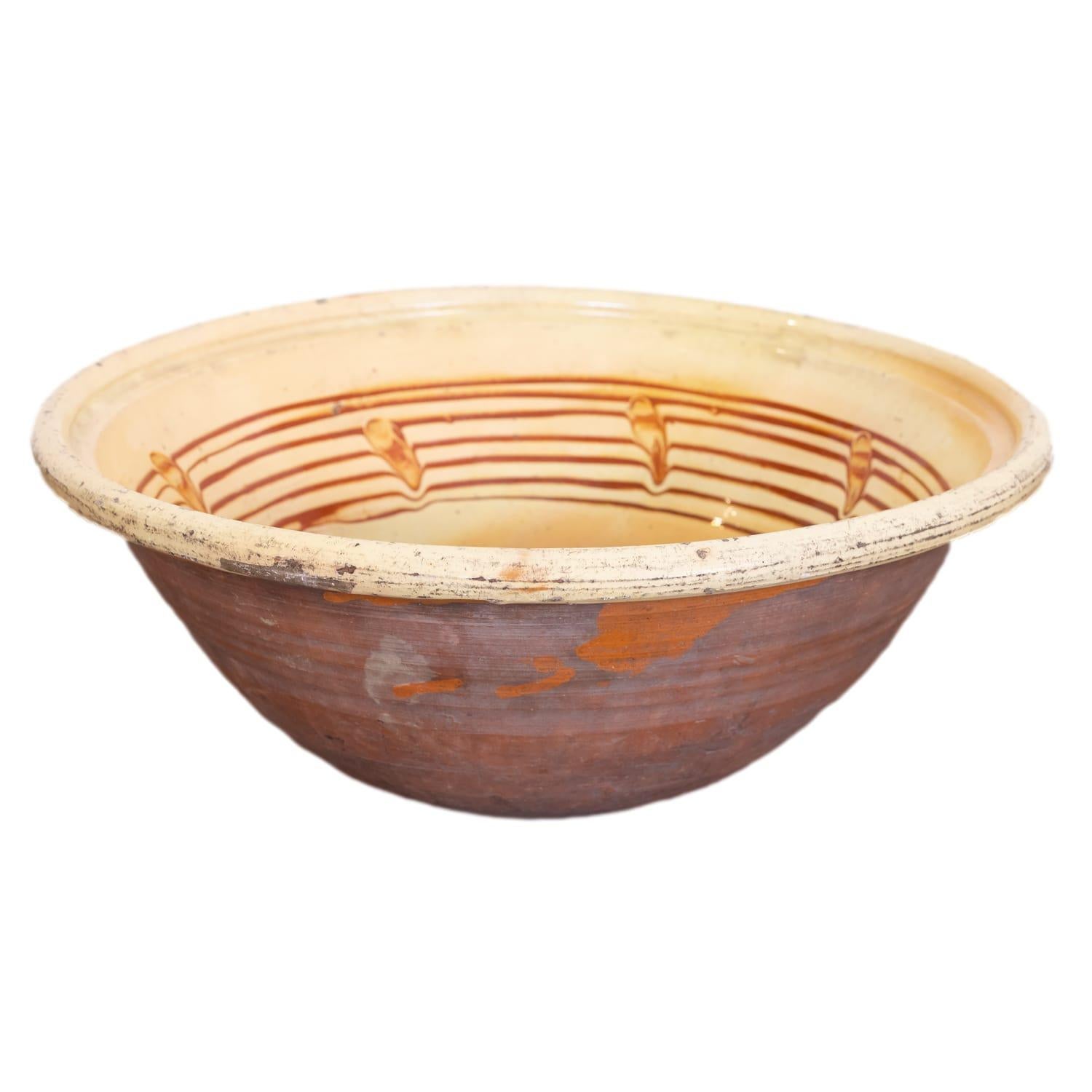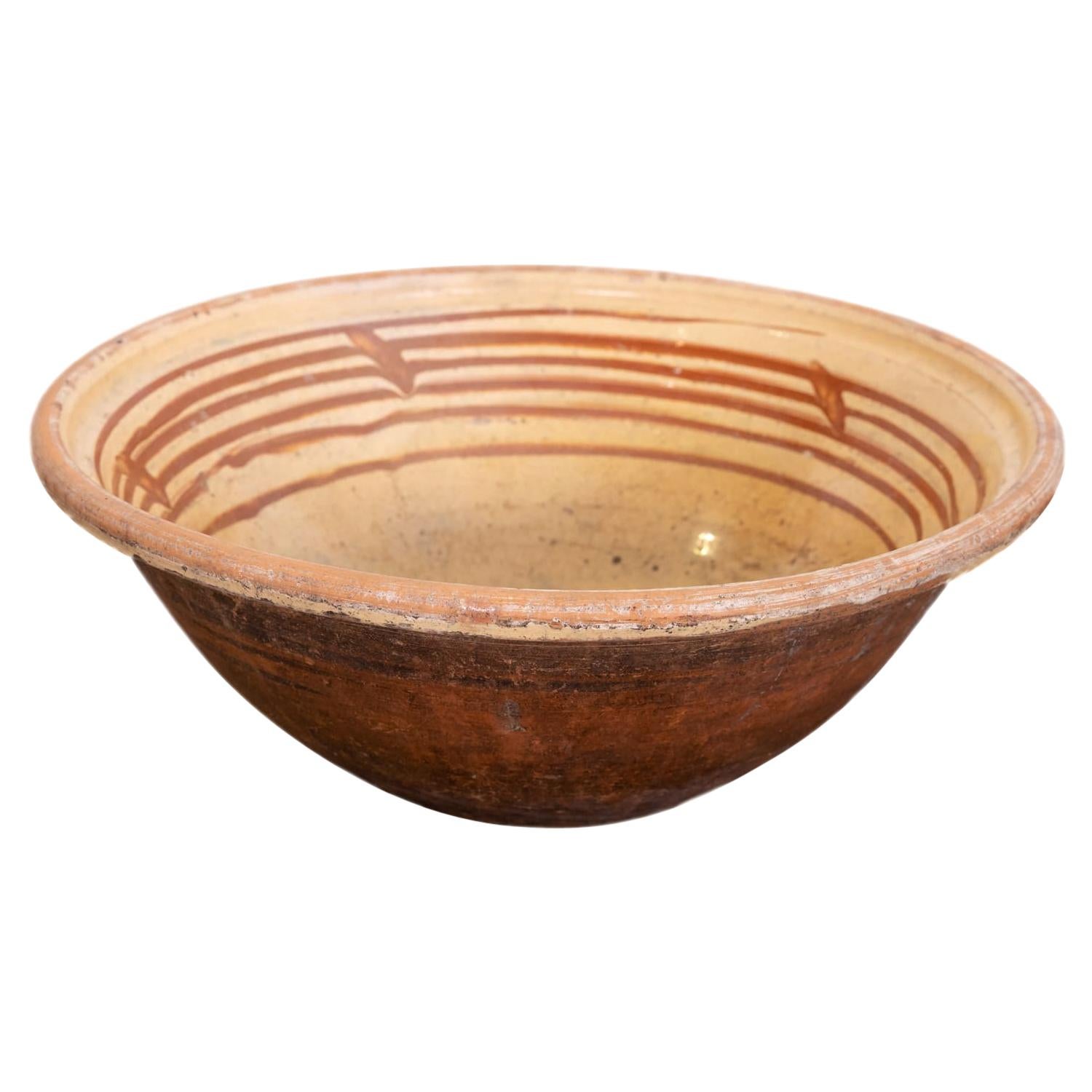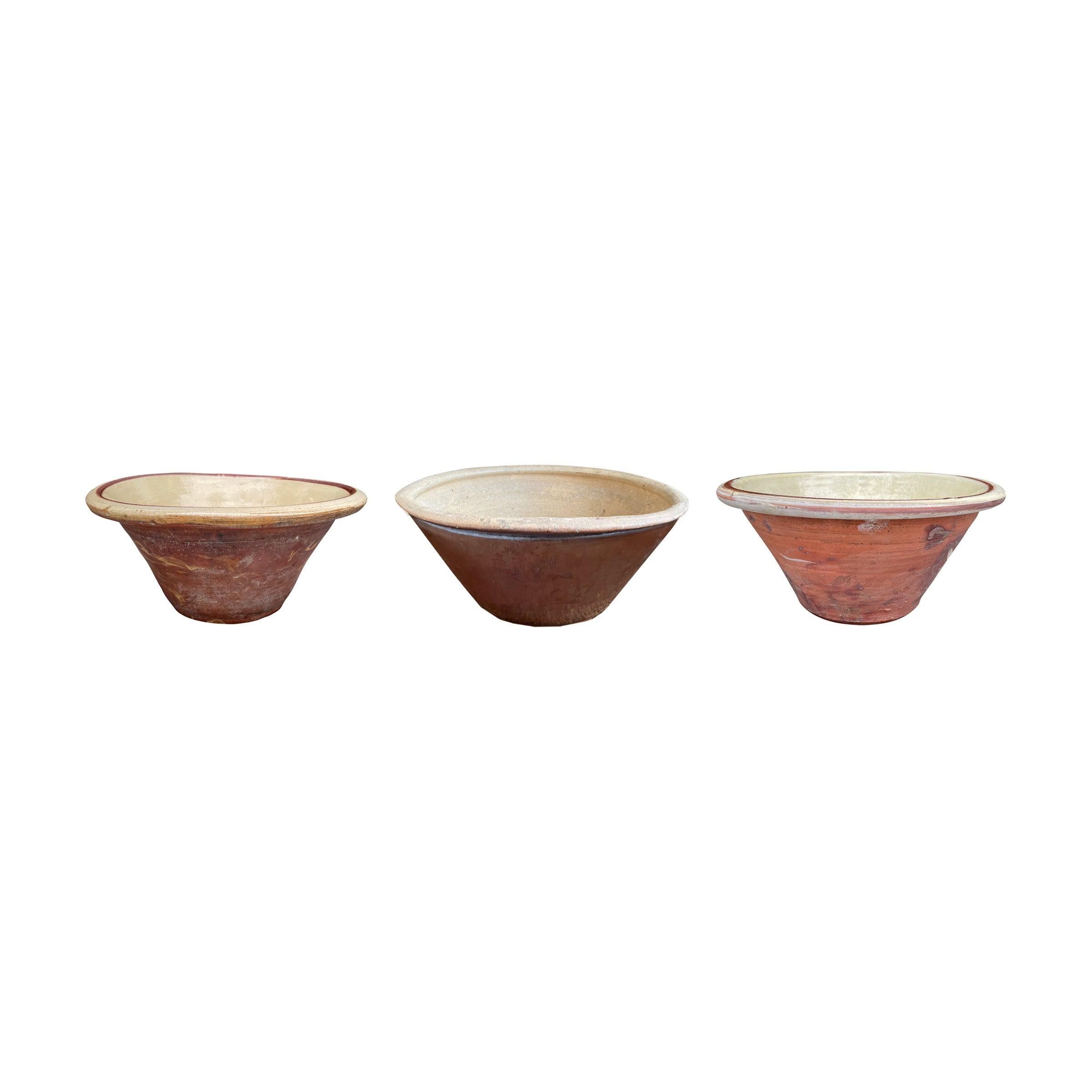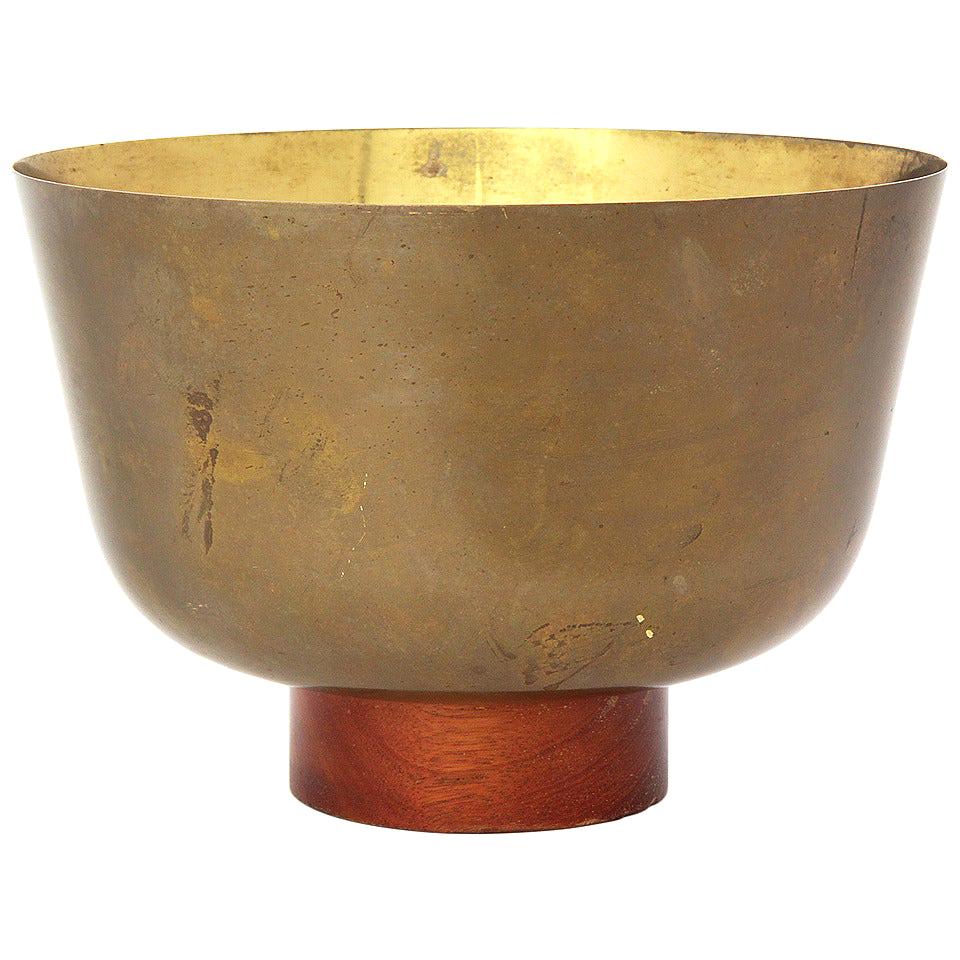Items Similar to Appalachian Dough Bowl
Want more images or videos?
Request additional images or videos from the seller
1 of 3
Appalachian Dough Bowl
About the Item
Chestnut bread bowl from the Appalachian Mountains. One could not ask for a better patina on this kind of piece.
- Dimensions:Height: 3.5 in (8.89 cm)Width: 13 in (33.02 cm)Depth: 9 in (22.86 cm)
- Place of Origin:
- Period:
- Date of Manufacture:1800s
- Condition:Well worn, with the story of much kneeded bread. Beautiful warm patina.
- Seller Location:Asheville, NC
- Reference Number:1stDibs: U1105318899173
About the Seller
4.1
Vetted Seller
These experienced sellers undergo a comprehensive evaluation by our team of in-house experts.
Established in 2010
1stDibs seller since 2010
163 sales on 1stDibs
Typical response time: 5 hours
- ShippingRetrieving quote...Ships From: Asheville, NC
- Return PolicyThis item cannot be returned.
More From This SellerView All
- Wedgewood Fairyland Lustre BowlLocated in Asheville, NCThis gorgeous Wedgewood piece with a mother of pearl interior is enveloped by a powerful golden dragon set against a mottled red exterior. A signature piec...Category
20th Century English Decorative Bowls
- Four-Piece Antique Copper Mixing Bowl SetLocated in Asheville, NCFour copper mixing bowls of graduating sizes: 14.5 x 7, 12 x 6, 10 x 5.25, 8.5 x 4.5, with brass loop hanging handles.Category
Early 20th Century American More Dining and Entertaining
MaterialsCopper
- Pair of Large Antique Copper FunnelsLocated in Asheville, NCBeautiful pair of copper funnels. One is lined with copper and the other with tin. Sizes: 9.75 x 7 and 5.6 x 7.5.Category
Early 20th Century American Craftsman More Dining and Entertaining
- Two Antique Copper ColandersLocated in Asheville, NCMarked Waldow, Brooklyn, NY. Large is 11 inches in diameter raised on a stepped base with copper rivets. Small is 9 inches in diameter also with stepped base. Both are riveted brass ...Category
Early 20th Century American Platters and Serveware
MaterialsCopper
- Turn of the Century Copper StrainersLocated in Asheville, NCTwo copper strainers, large is 12 inch diameter, tin lined with a triangular hanging loop and the holes are arranged in a petaled flower pattern. Smal...Category
Early 20th Century American American Colonial Platters and Serveware
- Oversized American Craftsman 'Cowboy Style' Copper Coffee PotLocated in Asheville, NCUnusually large hand-hammered coffee pot. Collapsible loop handle on top for lifting, bail handle on backside for pouring and a small loop handle on the lid, with tin lining.Category
Early 20th Century American American Craftsman Platters and Serveware
MaterialsCopper
You May Also Like
- 19th Century French Pancheon or Dough Bowl with Honey Yellow GlazeLocated in Birmingham, ALA late 19th century French pancheon or dough bowl with an interior honey yellow glaze and caramel splatters, circa 1880s. Pancheons were multipurpose terracotta kitchen...Category
Antique 1880s French Ceramics
MaterialsTerracotta
- 19th Century French Terracotta Pancheon or Dough Bowl with Pale Yellow GlazeLocated in Birmingham, ALA late 19th century French terracotta pancheon or dough bowl with an interior pale yellow glaze and rare caramel splatters, circa 1880s. Pancheons were multipurpose kitchen bowls use...Category
Antique 1880s French Ceramics
MaterialsTerracotta
- Late 19th Century French Pancheon or Dough Bowl with Light Mustard Yellow GlazeLocated in Birmingham, ALA late 19th century French pancheon or dough bowl having an unglazed reddish terracotta exterior with a light mustard yellow glaze and caramel splatters to the interior, circa 1890s....Category
Antique 1890s French Ceramics
MaterialsTerracotta
- Set of Three 19th Century English Terracotta Dough BowlsLocated in Chicago, ILA chic set of three 19th century English glazed terra-cotta dough bowls, two with unglazed exteriors with white crackle glazed interiors, and one with a br...Category
Antique 19th Century English Country Serving Bowls
MaterialsTerracotta
- Modernist BowlBy Hayno FockenLocated in Sagaponack, NYA finely rendered high-walled lacquered brass bowl that retains its original patina and rests on a turned walnut disc base.Category
Vintage 1950s German Mid-Century Modern Serving Bowls
MaterialsBrass
- Pankalangu BowlBy Trent JansenLocated in Beverly Hills, CABroached monsters by Trent Jansen The vast majority of mainstream Australian mythology commonly used as a foundation for Australian identity is culturally exclusive. Both Indigenous myths, including post-colonial myths and precolonial dreaming stories, and non-indigenous Australian myths, including the bush legend, ANZAC tradition and convict legend, focus on the historical role that the race of authorship has played in building the nation. However, a contemporary understanding of Australian history acknowledges the contribution of both Indigenous and non-indigenous Australians in forging the nation, and the national identity which accompanies it. Instead of perpetuating the same exclusive national myths, perhaps Australians should adopt a national mythology that acknowledges this inclusive understanding of Australian history, a mythology that unites Australians of many backgrounds under a shared Australian identity. In his book on Australia’s Folklore of Fear, Robert Holden explores pre-colonial ideas of Australia as a Great Southern Land – an imaginary landmass conjured up to counterbalance the continents in the northern hemisphere, as far removed as possible from Britain, the center of the Christian world (Holden, 2001). Holden speaks of Australia as an imaginary world, occupied by unimaginable creatures and monsters. Holden is commenting in part on the mythical creatures that originated in both British and Aboriginal Australian folklore and were shared by the Aboriginal and non-Aboriginal inhabitants of Sydney during the early years of colonisation. Stories of the yahoo, a creature that resembled a slender man, with long white straight hair, extraordinarily long arms and great talons (Unknown 1842), captured the imaginations of the new British settlers, and soon a fear of the yahoo became a common ground between Aboriginal people and British settlers. is fear of a gruesome and vicious creature gained its potency from the folkloric tales that were used to substantiate its existence. These tales were suitably vague, their lack of detail attributed to the fierce nature of these creatures and the assumption that no one had survived an encounter (Holden, Thomas et al. 2001). The yahoo “became one of the very few Aboriginal legends to be embraced by the Europeans” (Holden, Thomas et al. 2001, p16), providing a catalyst for conversation between individuals from these two culturally disparate societies and forming some personal links between these communities. Could creature myths like the yahoo once again form the foundation of a united national...Category
21st Century and Contemporary Australian Decorative Bowls
MaterialsAluminum
Recently Viewed
View AllMore Ways To Browse
Bread Bowl
Appalachian Art
Antique Bread Bowl
Kelim Ottoman
Vintage Cow Skin Rug
Stiegel Glass
Springerle Rolling Pin Vintage
Rogers Remembrance
Vintage Paint Brush Horse Hair
Antique Billiken
Rabot Antique
Gangway Boards
Gin Beefeater
Guerlain Shalimar Vintage Bottle
Jefferson Carved Cane
Antique Reindeer Bells
Gem Stone Bonsai
Antique Condensed Milk Container





